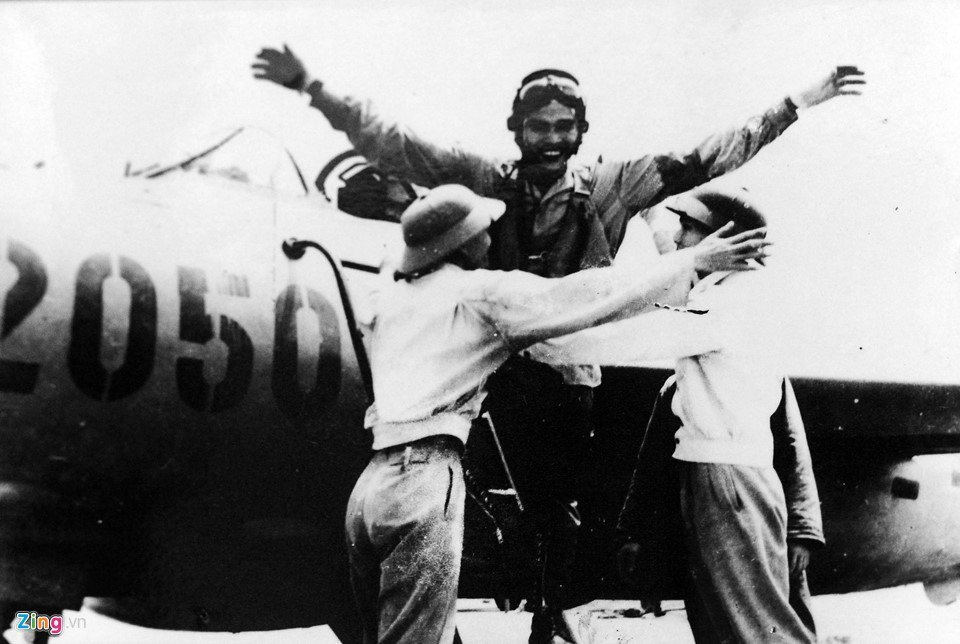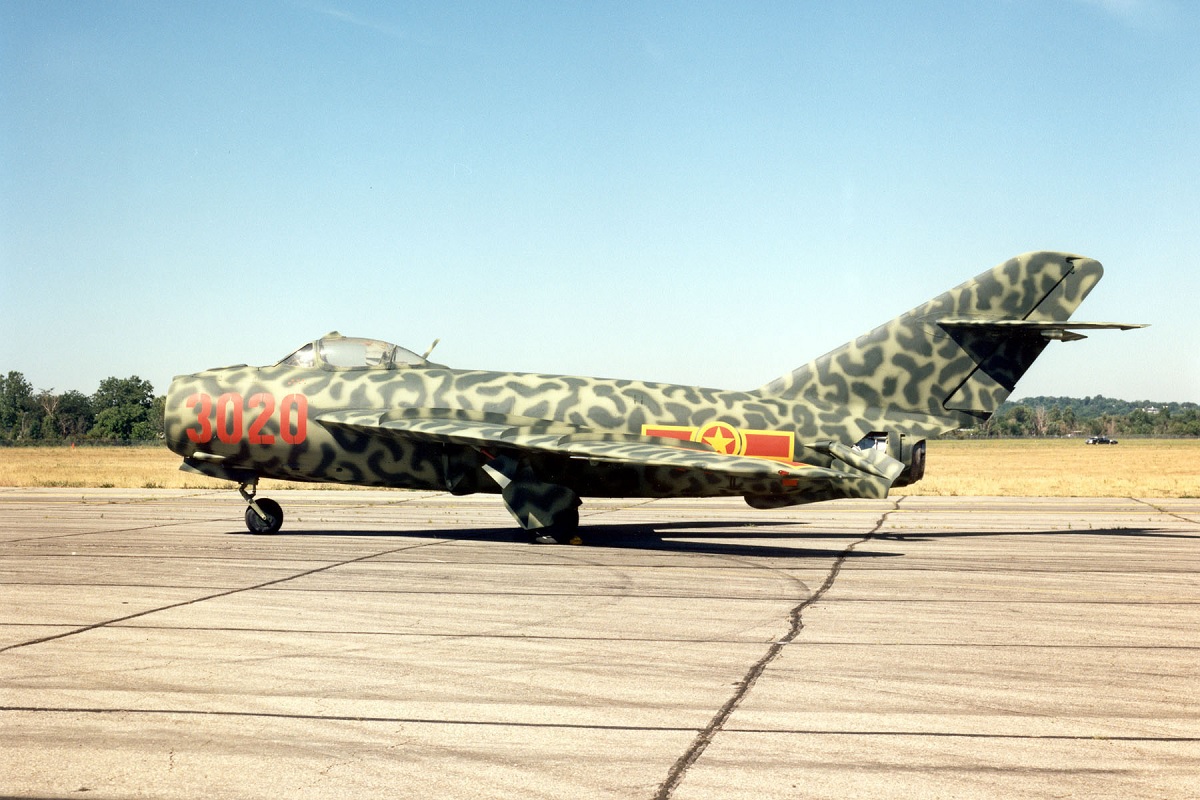Lt Cdr Thomas’ F-8 had been hit in the utility hydraulic system, preventing him from raising the fighter’s wing for a proper shipboard landing. He diverted to Da Nang, blowing down his landing gear with an emergency air system.
During a Rolling Thunder strike on April 3, 1965, US Navy F-8 Crusaders and Vietnamese People’s Air Force (VPAF) MiG-17s engaged in their first known combat. Several bridges that were an essential component of the supply lines to the south were the objectives. Three A-4s from VA-212 and VA-216 would go after the bridges.
Equipped with Zuni rockets, VF-211 F-8Es from USS Hancock struck the Dong Phong Thuong Bridge close to Ham Rong in sections (two planes each, flown by Lt [later Vice Adm] Jerry Unruh and his wingman, Lt Bobby Hulse, and Lt Cdr Spence Thomas and his wingman, Ens Ray Lorang). Unruh and Hulse ran against the flak sites defending the bridge, followed by Thomas and his wingman. As Thomas and his companion climbed back above 10,000 feet, clouds and fog covered their objective.
The 921st Fighter Regiment (FR) from Noi Bai, close to Hanoi, sent six MiG-17s to intercept them. The MiGs mixed with the A-4 formation and sneaked up behind the two Crusaders, either intentionally or by accident. A pair of F-8s, whose pilots were attempting a second run, were targeted by two fighters. The driver of MiG, Pham Ngoc Lan, got off and burst. Piloted by Lieutenant Colonel Thomas, his F-8 prey looked like it exploded. When Lan’s gun camera film was developed, it did appear that the American Crusader had indeed been destroyed. The first aerial kill for the VPAF was credited to Lan.
Amazingly, the Crusader, BuNo 150845, had managed to stay in the air despite suffering substantial damage from the 23mm and 37mm rounds that Lan had taken to its wings and vertical tail. Lt Cdr Thomas punched in his afterburner and raced away from the MiGs. His wingman joined up with Lt Unruh’s unit. The utility hydraulic system of Thomas’ F-8 had also been damaged, preventing him from raising the fighter’s wing for a safe shipboard landing. He diverted to Da Nang, blowing down his landing gear within the emergency air system.
The VPAF’s first confirmed kill had landed safely ashore. The jet was repaired and returned to flight status, accumulating 4,037 hours before being struck administratively and stored at Davis-Monthan AFB in Tucson, Arizona. Thus, the VPAF claim of the first F-8 kill was wrong.

Pham Ngoc Lan, who was erroneously credited with the Crusader’s demise, gave a detailed description of the engagement in Peter Mersky’s book F-8 Crusader Vs MiG-17:
“My flight consisted of Phan Van Tuc (my wingman), Ho Van Quy, and Tran Ming Phuong, while the second flight was made up of Tran Hanh and Pham Giay.
“The weather was foggy over Noi Bai airbase on April 3, with visibility of between four and five kilometers and 6/10ths cloud, with a base of 300m. Over the anticipated battle area, the volume of cloud was 5-6/10ths, with the cloud base up to 700m and visibility of up to ten kilometers. At 0700 hrs the radar operators reported a group of intruding fighters in North Vietnamese airspace, and they left after carrying out their reconnaissance duties. The North Vietnamese command felt that a large formation would subsequently attack the bridge at Ham Rong following this earlier flight. Col Gen Phung The Tai [commander of the VPAF] once again briefed the pilots on their objectives and ordered a stage-one alert. As anticipated, at 0940 hrs US planes attacked the bridges at Tao, Do Len, and Ham Rong.
“At 0947 hrs, the second flight was launched from Noi Bai. As the leader of the first attack flight, I took off at 0948 hrs and followed a heading of 210 degrees towards the province of Thanh Hoa. Our flight was closed to within 45km of the intruders at 1008 hrs, while the second flight was still flying over Ninh Binh Province. I informed air control at 1009 hrs that we had made visual contact with the intruders, and they responded with an order to drop our external fuel tanks and engage the enemy.

“The bridge at Ham Rong was attacked in pairs by the American fighter-bombers, who weren’t this time still unaware of our fighters. My wingman and I quickly latched onto the tails of the two American fighters, and when in the range I opened fire with my cannons. The F-8 Crusader in front of me exploded in a ball of fire and crashed. I was later credited with the first American fighter bomber to be shot down by a North Vietnamese fighter pilot.
“At the same time, the aircraft of Ho Van Quy and Tran Minh Phuong was also pursuing another pair of intruders, with the latter pilot flying as wingman. Ho Van Quy opened fire, but the Americans were out of range and both jets managed tonescape. However, the battle between the MiG-17s and the F-8 Crusaders was still far from over in the area of Ham Rong. At 1015 hrs my wingman, Phan Van Tuc, reported on the radio that he had spotted an American fighter to his right, and I immediately replied with an order to attack, as I in turn became his wingman. He succeeded in closing in on the Americans and opened fire with his cannons, eventually causing the F-8 to crash.
“At 1017 hrs Phan Van Tuc, Ho Van Quy, and Tran Minh Phuong received an order to land, and they duly returned home. In the meantime, I was running out of fuel in the vicinity of our airfield, and ground control gave me the order to eject. However, I thought that there was still a chance to save the aircraft, which was of considerable value to the VPAF and still had many more battles left in it! I looked for a suitable landing ground and spotted a long sandy strip on the bank of the Duong River, on which I made a successful landing.”
His MiG was later returned to service.

F-8 Crusader Vs MiG-17 is published by Osprey Publishing and is available to order here.
Photo by U.S. Navy and U.S. Air Force

